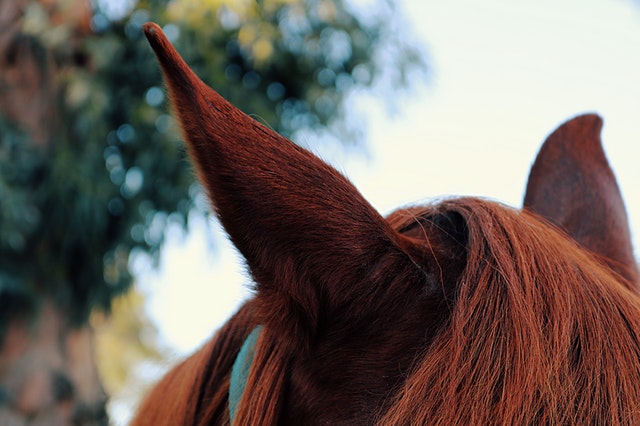
Any time that we are interacting with another being, we are inevitably influencing a type of behaviour ,even in the slightest. That’s why, when working with horses, it is so important to get things right from the start. As they are very sensitive animals, by training we are indeed shaping their behaviour. These influences or changes in the behaviour are the bases of how horses learn. The fundamentals of horse’s training come precisely from how they process the information that they gather from a particular experience.
In horses, learning can be associative or non-associative ( habituation, sensitisation), being the associative learning where we can take part in, and use daily in our training programs.
There are two types of associative learning, classical or operant conditioning. Classical conditioning comes from Pavlov’s dog theory, and it is the action of pairing two different events that eventually lead to an association and change in the behaviour, e.g: Pavlov rings a bell, and when the dog comes there is food, with time, just the sound of the bell will make the dog salivates for food without actual food. A bell alone is completely unrelated to the natural response to the stimulus salivating for food, however, using food as a reinforcement, it is possible to generate a natural response to different stimuli.
Operant conditioning, on the other hand, is based on a learned response to a stimulus, for example, a response that is evoked from a particular behaviour. It is also called trial and error learning. In psychology Operant Conditioning is associated with Skinner’s box theory, however Skinner’s work was based on Thorndike’s law of effect. This theory states that a behaviour that leads to pleasant consequences is more likely to be repeated while a behaviour followed by unpleasant consequences is less likely to be repeated. Skinner introduced reinforcement into this theory, by reinforcing a behaviour the chances of repetition are higher and, those behaviours that are not reinforced will eventually extinct. Additionally, a reinforcement can be positive or negative:
-Positive reinforcement involves the addition of something, for example, a horse is learning how to lift their feet up, and when he does it, he receives a reward such as food or a scratch.
-Negative reinforcement involves something taking away, for example, when teaching a horse to stop while riding, we apply a little pressure in the reins, once he stops or is in the process to, we release the pressure.
Another aspect included in Operant Conditioning is punishment, though is incredibly different from reinforcement, it is usually mistaken with negative reinforcement.
Punishment is actually the opposite of reinforcement and its function is to erase or weaken a response, as an aversive event usually decreases the presence of a determined behaviour.
Unfortunately, punishment is part of the traditional horse training in many countries and it is characterized by applying unpleasant or harmful stimuli in order to get the desired response or eliminate an undesired response.
Some of the most common problems when using punishment in training:
Because I have already said that negative reinforcement and punishment are generally confused, I am going to illustrate a couple of examples I experienced working within the industry.
In the middle of a group riding lesson, one horse misbehaved, the instructor got on the horse to teach him a lesson by shortening the reins while making him work and using the whip to tap between their ears- If it does not sound outrageous by itself I will take the moment to make a comment, once the actual rider got off the horse, the moment of learning is past, anything you do afterwards the horse will not understand where is coming from and why. Remember horses have actually very short memory until the information is processed.
Another scenario we are all familiar with, in a show jumping competition, a horse refuses to jump and the rider turns him around and whips him non-stop to get him to jump. Something that usually ends in the horse refusing again, bolting and backing to get the rider off or attempting to jump unsuccessfully.
Now, think for a couple of minutes how we practically can involve positive and negative reinforcement in our training.
Positive reinforcement is the basis of clicker training, this method involves the use of a clicker or cue to associate a behaviour with the desired response, it is widely used to create a positive bond with the horses. It has been proven successful to teach a horse to load in a trailer or groundwork training, among a lot of activities.
Negative reinforcement, on the other hand, is mostly used in classical or traditional training, or combined with positive reinforcement. In practical training it is basically applied by the rule of pressure-release, for example, one horse that I had in training would not walk on the lead after a nasty accident resulting in muscle damage in his hindlimbs. In order to heal and make the bloodstream circulate throughout his body, walking was necessary. Positive reinforcement only would not work so I needed to apply some pressure by walking on his side with a lunge whip, once he moved, I took away the whip. After a few times, he would walk perfectly fine without external help.
There are many techniques we can use to train horses in the right way. However, it is very important to know how a particular horse will react, or what makes that horse to work. Some horses cannot be trained using positive reinforcement with food, as they will lose complete attention and get too muggy, others prefer a good scratch, and others work better by applying pressure.
Author: Tamara R.
© EquestrianWork.com - All Rights Reserved
